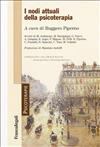
Vi sono due modi per concepire il rapporto tra filosofie orientali e psicoterapia occidentale. Un modo è rispettare la diversità delle filosofie occidentali (ad esempio nelle visioni del mondo) e introdurne aspetti a scopo terapeutico: in questo senso alcuni parlano di "integrazione" o "eclettismo", con tutte le controversie legate a questi termini. Un secondo modo è partire da una sola prospettiva, quella di una psicoterapia occidentale, e studiare le pratiche orientali per comprenderne il meccanismo di azione. Questo articolo segue questo secondo modo, e utilizza la teoria psicoanalitica per discutere tecniche quali il rilassamento, il training autogeno (una versione occidentale dello yoga), la meditazione, la mindfulness e altri "esercizi". Vengono discusse anche tecniche occidentali, come la epochè fenomenologica, le "associazioni libere" e l’"attenzione liberamente fluttuante" di Freud, il "momento presente" di D.N. Stern, la terza ondata (third wave) del movimento cognitivo-comportamentale, e così via.

